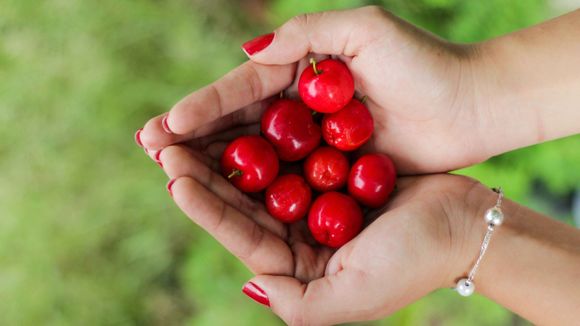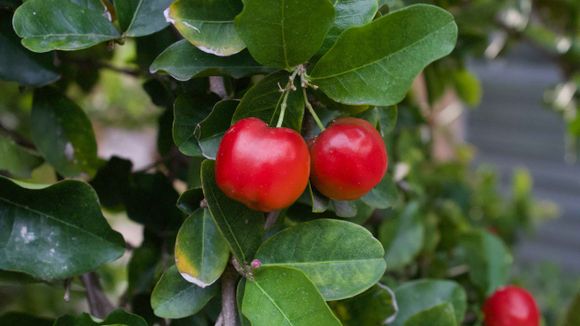What is acerola cherry?
Acerola Cherry (Malpighia glabra) is a plant that originates in America. [ [ref. 1] ] The bush blooms from April to November, with the fruits ripening 3-4 weeks after flowering. It gives cherries which are 1-4 cm in diameter. At first they look green, then switch to orange-red and reach the final bright red color at full ripening.
What is Acerola Cherry useful for?
Besides containing a huge amount of vitamin C, acerola cherries contain other beneficial nutrients.
Rich in vitamin C
Vitamin C is necessary for immune function, collagen production and carnitine synthesis, which plays a role in transforming fat into energy. Vitamin C also plays a role in the production of neurotransmitters, which in turn are involved in the normal function of the nervous, cerebral and other systems.
Due to the extremely rich amount of vitamin C, acerola is often used to help or prevent a cold or flu. It has more vitamin C than blackcurrant and rosehip.
Phytonutrients
Phytonutrients identified in the acerola cherry include carotenoids, phenols, flavonoids and anthocyanins, which have antioxidant properties. [ [ref. 2] ]
The fruit also contains provitamin A as carotenoids, which means they are transformed into vitamin A when the body needs nutrients. Other vitamins contained in acerola are B1, B2, B3, plus minerals iron, phosphorus, and calcium.
The main phenols present in acerola are in the form of phenolic acids, flavonoids and anthocyanins. These compounds are useful for combating oxidative damage, along with antioxidant nutrients. Phenolic compounds are one of the key secondary metabolites that have a variety of structures and subsequently a variety of useful functions present ubiquitously in plants.
Rich content of pectin
Acerola cherry can support digestive health. Pectin is a soluble dietary fiber, methylated ester of polylacturonic acid, which makes up about a third of the dry matter of the cell wall in the fruits of acerola and exerts a powerful prebiotic effect.
Prebiotic fibers are fermented by beneficial bacteria present in the colon to produce beneficial compounds that maintain immunity and signal beneficial actions throughout the body. [ [ref. 3] ]
Is acerola cherry more useful than ascorbic acid?
When a food is consumed in its original state (instead of processed), the body can absorb more nutrients. In the case of cherry acerola, especially if the fruit is organic, the nutritional content is much richer and provides many other substances other than vitamin C.
In addition, there are additional nutritional benefits from eating fruit. The fruit will provide bioflavonoids, minerals, vitamins, trace elements, as well as useful organic acids. It is known that these nutrients work in synergy with vitamin C in terms of absorption and activity.

How to take acerola?
If possible, consumption of the fruit part of the acerola plant is recommended. Its taste is usually described as sweet, fragrant and a astringent. It is easy to eat acerola raw or prepared in dishes.
The best way to get the fruits is to grow on your own, because cherry acerola quickly spoils. You can also keep fresh acerola cherries by freezing them as soon as you gather them.
The acerola fruit is most often found in the form of dietary supplements. This is because the berry decomposes within five days of harvesting, losing much of its nutrients. Even juices spoil easily, unless preservatives are added. Still, the best way to take cherry acerola is by consuming the fruits themselves. Supplements shouldn't be your first choice.
Are there side effects when consuming acerola?
It is possible to consume too much of the fruit, which in turn causes digestive disorders. To avoid problems or discomfort, take milligram doses of acerola, similar to any vitamin C supplement.









